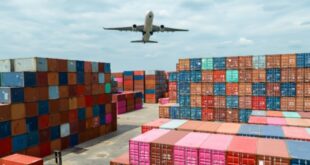Employment is up and people have money to spend, so the upcoming Christmas season should be a good one for retailers. Most important, it should be an improvement on last year, but issues like tariffs and the political turmoil in Washington loom on the horizon.
All signs point to a solid holiday shopping season during November and December.
That, at least, is the prediction of the two major retail trade associations in the United States both of which are predicting stronger sales, and a better overall retail climate, than last year.
The National Retail Federation in Washington, D.C., announced earlier this month that it expects Christmas retail sales to increase between 3.8 percent and 4.2 percent compared with 2018, according to the non-profit’s annual forecast.
If that forecast is accurate, then this year’s holiday retail sales will have kept pace with the previous five years, when the average year-over-year increase has been 3.7 percent. Most retailers expect at least a three percent increase in sales every year, a number they generally consider good but not outstanding.
Sales this year should be much stronger than last year, when they rose only 2.1 percent – $701 billion total – mostly because of a possible government shutdown, volatile stock market and threats of tariffs, especially against China.
In raw numbers – not counting automobile dealerships, gasoline sales and restaurants – U.S. sales are expected to range from $728 billion to $730 billion this November and December, according to the federation.
“The U.S. economy is continuing to grow and consumer spending is still the primary engine behind that growth,” federation president and chief executive officer Matthew Shay said in a statement. “Consumers are in good financial shape and retailers expect a strong holiday season.”
But Shay threw some water on the federation’s mostly positive forecast, citing the partisan political upheaval in the nation’s capital, and concerns regarding the economy’s future, as possible long-term problems.
“There has clearly been a slowdown brought on by considerable uncertainty around issues including trade, interest rates, global risk factors and political rhetoric,” Shay said. “Confidence could be eroded by continued deterioration of these and other variables.”
The federation predicts that online and other non-store sales will increase between 11 percent and 14 percent this year, or from approximately $162.6 billion to $166.9 billion in raw sales. Online/non-store sales totaled $146.5 billion last year.
Tariffs could still hurt the economy, but the federation is cautious regarding that issue, saying their full impact have yet to be felt and are difficult to predict. The forecast notes that some merchandise that is traditionally popular with consumers around the holidays – clothing and televisions, for example – are subject to tariffs that took affect in September, while other products won’t be affected until December.
Retailers are using multiple tactics to limit the impact of tariffs on their customers, but nearly 80 percent of the consumers surveyed by the federation in September said they were concerned about tariffs causing prices to rise, and that that concern could impact their holiday spending.
The nation’s other major retail trade association, the International Council of Shopping Centers in New York, is predicting a stronger holiday season than the retail federation: a year-over-year sales increase of 4.9 percent, and $832.3 billion in sales.
The typical adult will spend $683 on Christmas gifts this year, according to the survey of 1,000 consumers nationwide.
“Consumers are not only optimistic about the upcoming holiday season, but [they] also continue to favor physical stores when shopping for gifts,” said Tom McGee, the council’s president and chief executive officer, in a statement.
Locally, with employment and consumer spending on the rise, Inland retailers should be looking forward to the upcoming Christmas season, said Robert Kleinhenz, economist and executive director of research at the UC Riverside School of Business Center for Economic Forecasting and Development.
“I agree that the holiday season this year is going to be a good one,” Kleinhenz said. “I’m upbeat, but I honestly don’t know how the tariffs might affect things. They could have an impact, especially in the Inland Empire because its so dependent on logistics, but we’ll have to wait and see.”
In the Inland Empire, unemployment is low, wages are up and people aren’t being dragged down by credit card debt. All of that, combined with a strong national economy, means Inland residents can be expected to spend money this holiday season.
“We’ll see more gift cards this year and more online sales,” Kleinhenz said. “More and more people are content to shop online, and gift cards get more popular every year. The only problem is gift cards aren’t counted until they’re cashed, which makes it harder to figure out how much money was spent at Christmas. Some gift cards aren’t cashed until spring or summer.”
 IE Business Daily Business news for the Inland Empire.
IE Business Daily Business news for the Inland Empire.

